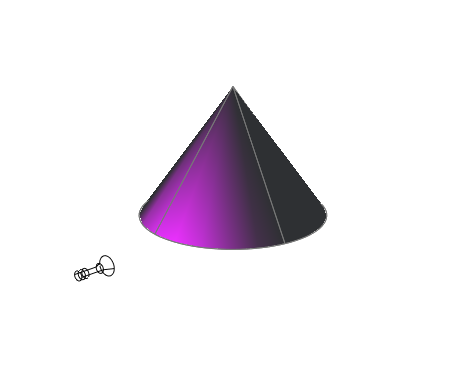A spotlight distribution casts a focused beam of light like a flashlight, a follow spot in a theater, or a headlight. A spotlight emits a directional cone of light. You can control the direction of the light and the size of the cone.
In the standard lighting workflow, a spotlight can be manually set to attenuate its intensity with distance. However, a spotlight's intensity will also always attenuate based on the angle relative to the spot's target vector. This attenuation is controlled by the hotspot and falloff angles of the spotlight. Spotlights are useful for highlighting specific features and areas in your model.

Spotlights in Photometric Workflow
A spotlight can have photometric distribution properties. The attenuation for a photometric spotlight is always set to inverse square.
When the LIGHTINGUNITS system variable is set to 1 (American units) or 2 (International SI units) for photometric lighting, additional properties are available for a spotlight. The following photometric properties can be set via the Properties palette:
- Lamp Intensity. Specifies the inherent brightness of the light. Specifies the intensity, flux, or illuminance of the lamp.
- Resulting Intensity. Gives the final brightness of the light. (Product of lamp intensity and intensity factor. Read-only.)
- Lamp Color. Specifies the inherent color of the light in Kelvin temperature or standard.
- Resulting Color. Gives the final color of the light. This is determined by a combination of the filter and lamp color. (Product of filter and lamp color. Read-only.)
The following image is an example of a photometric spotlight with the photometric properties outlined on the Properties palette:
